During the 16th Century, there was a great fascination within the royal courts and upper classes with automated machines and clockwork automata, particularly as centerpieces for banquet tables and entertainment for guests.
Mechanical automata were also often used as diplomatic gifts. One such machine was the Mechanical Galleon, an elaborate ‘nef’ or table ornament in the form of a ship, which is also an automaton and clock.
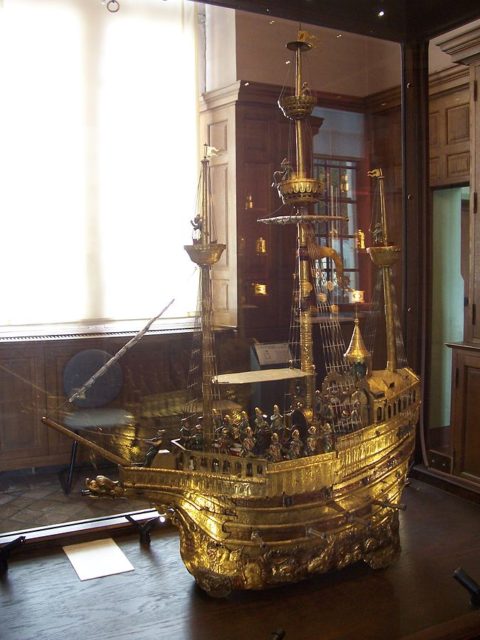
Based on the great European ships that sailed the oceans during the 1500s, this automaton, standing 3 feet high, was constructed by Hans Schlottheim (1544 – 1625) of Augsburg, a skilled goldsmith, clockmaker, craftsman, and mechanic.
This piece was said to be included in the inventory of the Kunstkammer of the Elector of Saxony, in Dresden, in about 1585.
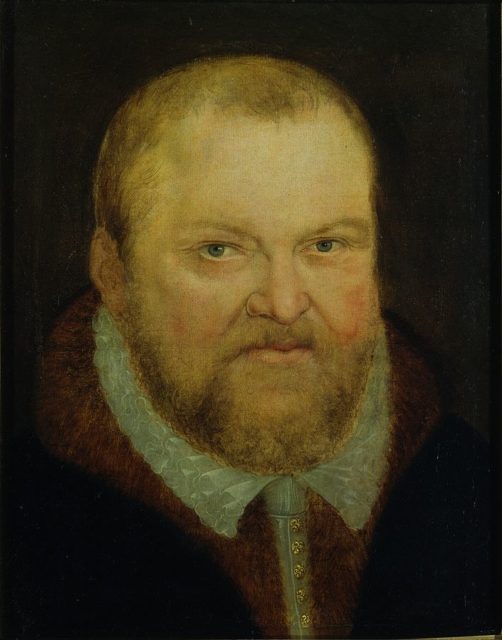
It was designed not to sail the seas, but to move across the table at imperial banquets. It combines two of the key technologies of the Renaissance: sailing ships and the mechanical clock.
The Holy Roman Emperor is the central figure on this galleon, and he is surrounded by seven noblemen known as the Electors, who were responsible for selecting the emperor.
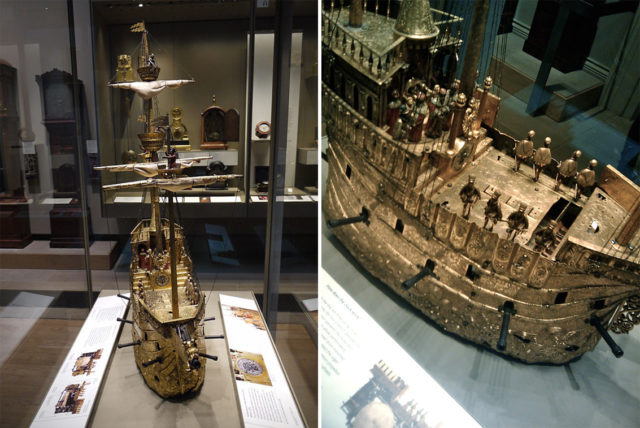
The Holy Roman Emperor was Rudolf II of Habsburg when the galleon was made. It was, in fact, an allusion to the Spanish treasure fleets that enriched the Habsburg family. A regal organ with bellows played music as the machine moved along, then, as the cannons ‘fired’ in an explosion of noise and smoke, the imperial galleon moved forward.
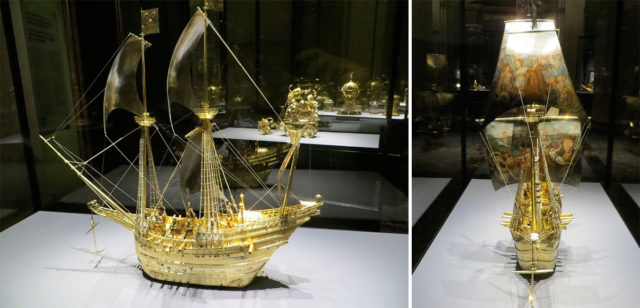
Hans Schlottheim included three separate clockwork mechanisms; one of the mechanisms powered the chiming clock, but also provided the power for the seven revolving electors; the music, including the drum, was powered by another motor; and the third gave the ship movement. The mechanism was said to require rewinding every 24 hours.
Miniature sailors use hammers to strike the hours and quarters on bells in the crows nests.
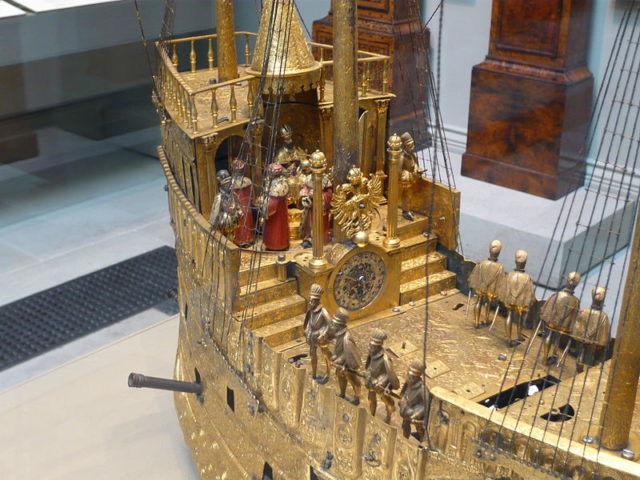
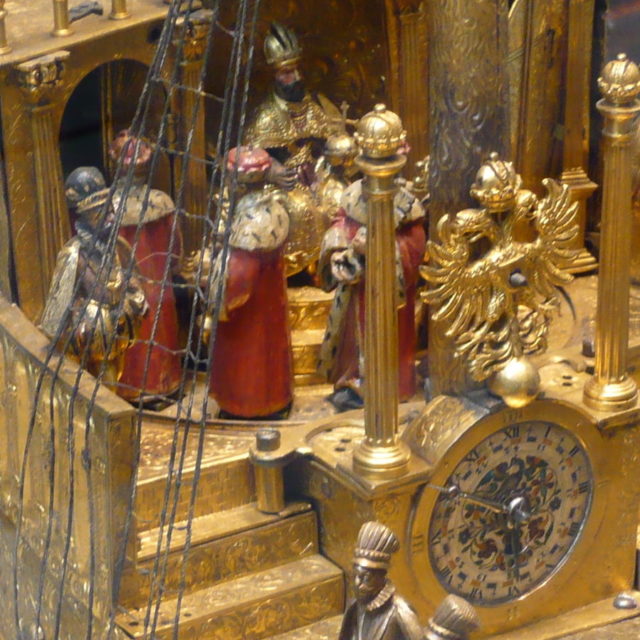
Since 2010, however, its mechanism has no longer worked. Nowadays, the ship is silent, yet it still looks magnificent and is a part of the British Museum’s Clocks and Watches Collection.
Two other similar models are located in museums in France and Austria.
